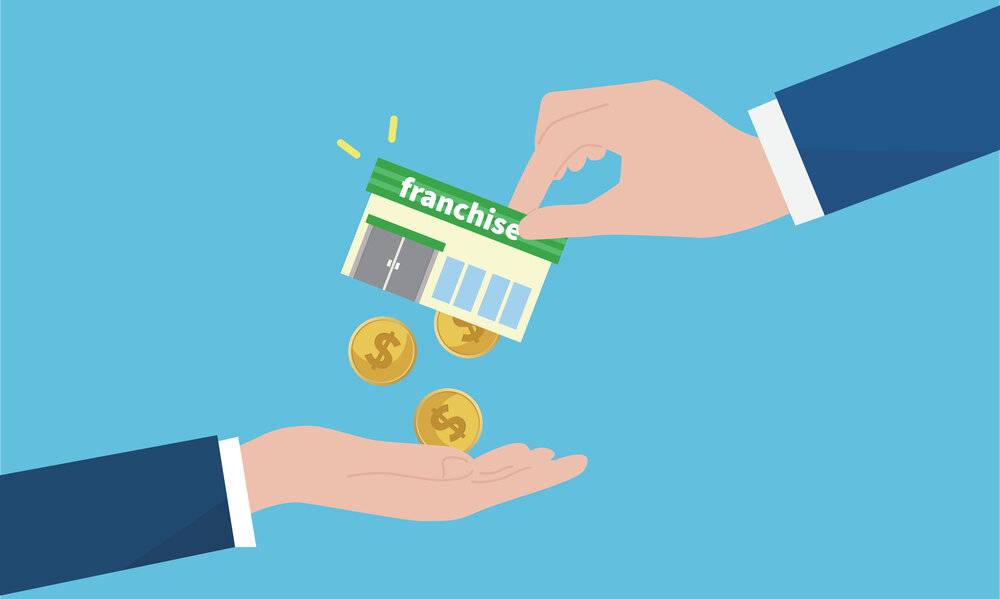The Ultimate “Shark Tank” Vocabulary


Well, as one of the most iconic and eye-catching shows, telecasted, its last few episodes this
week and wrapped up on a positive note, definitely it left behind a plethora and surfeit
amount of knowledge, experience and learnings for all the viewers. As the show proceeded,
there were some terms which left the users perplexed and tangled in the middle. No, I am not
talking about Ashneer Grover’s “DOGLAPAN” or Namita Thapar’s “EXPERTISE”, but
rather more of the technical terms used throughout this Shark Tank season.
Here, I have tried
to cover all those terms and explain them in the simplest way possible:
Starting from letter "A"
1. Advisory Shares: These are the stock options offered to the company advisors and not
employees.
2. Amortization: It is a method for decreasing an asset cost over a period of time.
3. Angel Investors: Not all investors are so wealthy. Investors can invest anywhere from
one rupee to Millions. Investors with deep or big pockets are known as “Angel
Investors”.
4. ARR: This is known as the "Annual Run Rate". The total amount a startup is getting,
be it revenue, GMV, profits, or in simpler terms the net total income possible in a
financial year at the current rate, is known as “ARR”.

Starting from letter "B"
5. Bootstrap: When you start your company with your savings, or by borrowing money
from your friends/family it is known as “Bootstrap Funding”. No investor or third
party plays any crucial role in the investment part here or possesses any significant
holdings in the company.
6. Burn Rate: The favourite term of my personal favourite Shark, Anupam Mittal! It is
the measure of how fast a company spends its cash or funds to get the company to
keep going. For Ex: If a startup spends 1 lac on office space, 2 lacs on salary, and 2
lacs on server costs, then its gross burn rate will be 5 lacs (1+2+2).
7. Business Model: This refers to the strategy/plan discussing how and why the business
will make money.
8. Business Plan: It tells when and how much money our business will make.
9. B2C: It stands for “Business to Customer”. In this, the goods are sold directly from
the manufacturer to the end user through an online platform without involving any
intermediaries like whole sellers or retailers. B2C brands generally sell products of
multiple different brands and don’t specialize in a particular category. For Ex:
Marketplace websites such as Amazon, Flipkart etc. Other business models are B2B,
D2C and C2C.

Starting from letter "C"
10. CAC: It is known as the “Customer Acquisition Cost”. Now suppose, if we spent 1
lakh rupees on marketing on google, and it led to setting up a customer base of 10000
paid users. Then, in that case, our CAC will be Rs 10 (100000/10000 i.e. Total Money
Spent/No. of paid users).
11. Capital: It is a very general term and it refers to anything that offers some value. It
can point to both tangible and intangible capital.
12. Cash Flow: “Cash Flow” refers to the net amount of monetary capital transferred to
and from a business. Inflow refers to the cash business received and Outflow refers to
the cash business spent. This is crucial because the more positive cash flow is present
in the company, the more value is offered to the shareholders.
13. Churn Rate: It is the rate at which a customer stop using a business’s
products/services. This applies readily to subscription-based products/services.
14. COGS: It refers to the "Cost of Goods Sold". It is the summation of all the direct costs
associated with making a product. It typically includes money spent on raw materials
and labour and it doesn’t include costs associated with marketing, sales or distribution
of the product.
15. Consumer Contract: A legal contract between a buyer and a seller pertaining to the
purchase of the product being sold is known as a "Consumer Contract".
16. Convertible Note: It refers to a temporary debt offered to a company that will be
converted into equity later. This equity usually comes in the form of stock shares.
This is done in the case when the valuation of the company stands unclear. On the
next valuation, in further rounds, this is converted into stock shares at a discount fixed
percentage decided earlier.
17. Crowdfunding: This is not a conventional financing option. This is done when a
startup needs extra cash to start production, then, in that case, they may start a
crowdfunding campaign. It is a campaign meant to prompt a large number of potential
customers to donate money to a venture.
18. Customer Acquisition: It refers to the act of acquiring customers. This is a very broad
term and it can encompass all marketing/promotional/brand awareness efforts.

Starting from letter "D"
19. DAU: It refers to "Daily Active Users". It refers to the number of users that came to
the app on daily basis, logged into it, and spent some time on it.
20. Depreciation: It is the amount of asset value that is lost over time.
21. Dilution: As the equity split of Ram and Rajesh reduced from 50% to 41.66%, in the
example given while explaining equity, this phenomenon of reduction in equity is
known as “dilution”.
22. D2C: It stands for “Direct to Customer”. In this model also, the goods are sold
directly from the manufacturer to the end user through an online platform without
involving any intermediaries like whole sellers or retailers. D2C brands generally
specialize in a particular product category while B2C are similar but they sell
products of multiple different brands. For Ex: Lenskart manufactures frames, lenses
etc and sells directly to us through its website/app. Other business models are, B2B,
B2C and C2C.

Starting from letter "E"
23. EBITDA: It is an abbreviation for “Earning Before Interest, Taxes, Depreciation and
Amortization”. It is a financial measure to record the performance of a company.
EBITDA = Net Income + Interest Expense + Taxes + Depreciation and Amortization
OR
EBITDA = Operating Income + Amortization + Depreciation
EBITDA analyses and compares the profitability of a company with its rivals. It is a
profitability measure. This means, that if suppose, your company has loans or other
expenses, in case it didn’t have to pay that then what would have been the amount that
the company would have received or earned? Thus, it can be possible that the
company can be at loss, but it has a positive EBITDA.
24. Equity: The amount of capital contributed or claimed by the proprietor of a firm is
called equity. It refers to the ownership of the assets of a company. Whether it is 40%,
10% or even 1%, it gives an idea about how much percentage of assets are owned by
someone in a company. It is basically, an asset minus any liability. Having 20%
equity in the company doesn’t mean owning 20% of the company. Let us understand
this with the help of an example: Suppose there are 2 founders of a company Ramesh
and Ram and there is a 50% equity split between both. Now, suppose the valuation of
the company is initially 1 crore and it is fragmented in the form of 1000 shares.
Now,
since both possess 50% equity in the company, thus both will have 500 shares each.
Now, if suppose Monu enters to attain 20% equity in the company, for 20 lakh rupees
it means that now the new valuation of the company will be 1 crore 20 lakhs.
The
shares won't be taken from Ramesh and Ram for the same, rather 200 new shares will
be added then in the scenario, if Ram and Rajesh's shares would have been transferred
to Monu then the money would have been transferred to them in exchange for their
holding but since the addition is being made to company's wealth 200 new more
shares will be generated. So, now after the transaction, the equity split will be like
this:
For Rajesh and Ram: (500/1200)*100 = 41.66% each
And for Monu: (200/1200)*100 = 16.67%
Here, 1 crore was the existing valuation and 1.2 crore is the post-money valuation.
25. ESOP: ESOP means “Employee Stock Option Plan”. In this, the company issues
shares to the employee whether by issuing new shares or by purchasing existing
shares from the market by establishing trust.

Starting from letter "F"
26. Franchise: When a franchisor and franchisee partner, they create a franchisee. The
original business is known as the franchisor. Franchisors sell the right to use their
name and concept, which attracts customers.
Starting from letter "G"
27. GMV: stands for “Gross Merchandise Value”. Let us understand this with an
example, suppose we are selling a 100 rupee note at 80 rupees. Surely, this will attract
a large number of customers. Suppose now we got 1 crore customers. So the net total
sales or revenue of the company would be 80 crores with a 20 crores loss. Here, we
have nothing to do with the 20 crores, and 80 crores are the GMV.
28. Gross margin:
It means “Gross Profit”. Let us understand this with the help of an
example, suppose a startup is manufacturing shoes, the raw materials used in the
manufacturing involve the use of leather, cotton, rubber, metal etc which costs around
suppose 1500 rupees and the labour employed to build them costs around 200 rupees.
Now, if the selling price of the shoes is about 5000 rupees, then the gross
margin/profit would be (5000-(1500+200) =3300). In simpler terms, we can say that:
Gross Margin = Selling Price – Raw Materials Cost – Labour Cost.
Or, we can say that here it will be:
(3300/5000) *100 = 66%. This is called as “Gross Profit Margin".

Starting from letter "H"
29. HORECA: It stands for “Hotels+Restraunts+Cafes/Caterers”. It refers to the services
offered in the food and beverage industry.
Starting from letter "I"
30. Idea: It is one of the initial stages when you think about building a service or a product. It is the most crucial stage as this is the stage when you evaluate and judges what problem you are going to solve and how it will affect society.
Starting from letter "L"
31. Line of Credit: It refers to the user’s borrowing limit for a certain product/service.
One can use their credit without having to repay until the limit is reached.
32. LTV: It stands for "Lifetime Value". It refers to the net total sales made during the
entire lifespan of the company from a customer after acquiring him/her.
Starting from letter "M"
33. Market value:
“Market value” is the value applied to a product/service from the
market’s investor.
34. MAU:
It refers to "Monthly Active Users". It refers to the number of users that came
to the app on monthly basis, logged into it, and spent some time on it.
35. MVP:
MVP is not like Prototype. MVP stands for “Minimum Viable Product”.
Viable refers to something that works. So, MVP refers to the first-ever product of a
startup that launches in the market. Later developments can happen in it, as time
passes.
Starting from letter "N"
36. Net Margin: Now if we subtract all other costs such as taxes, interest, operation costs
such as salary, advertisement cost, marketing cost, electricity expenses, etc from the
Gross Margin/Profit we get the Net Margin. Now suppose, if the sum of all other
indirect expenses is 1500 rupees more. Then, the net margin/profit in that scenario
will be 3300-1500 = 1800. Or, we can say that here it will be:
(1800/5000)*100 = 36%. This is known as “Net Profit Margin”. It is what sharks also
refer to as the “Bottom Line”.
Starting from letter "O"
37. Offer and Counter Offer: As entrepreneurs ask for funding from sharks in exchange
for equity, the amount of money the entrepreneur asks from them initially is known as
an “Offer”. Sharks propose to them a different offer if they feel there is some inflation
in the numbers of the company or a problem in company valuation. Now, if the
entrepreneur feels that the valuation or offer by the sharks is not fair, they have the
option to counter or put another offer in front of sharks in response to the offer given
by sharks. This is known as a “Counter Offer”.
38. Overhead: It encompasses business expenses that are not directly related to
product/service creation or production.

Starting from letter "P"
39. Patent: A patent is a property right granted to an inventor by a sovereign or
government body in exchange for complete disclosure of the innovation and
invention. The inventor receives exclusive rights to the patented proof, design, or
invention for a fixed period.
40. Perpetuity: It is also known as an “Endless Annuity”. It refers to an endless cash flow
stream where payments are made indefinitely.
41. Pitch: It refers to the process of presenting your ideas. Conventionally, it is done with
the help of a pitch deck that involves a PowerPoint presentation and other aiding
documents.
42. Pivot: It refers to the process of changing the path. For example, suppose we are
doing something else now and doing something else later on. For Ex: Snapdeal, which
was earlier a coupon website or daily deals platform took a pivot to turn into a
marketplace website.
43. Post-Revenue: Revenue means “sales” or the money that a company makes before
subtracting expenses. When a startup has drawn its entire business plan, developed
the product, and built the team, but has also made satisfactory sales of its product,
then this stage is known as the “Post-Revenue” stage.
44. Pre-Revenue: Revenue means “sales” or the money that a company makes before
subtracting expenses. When a startup has drawn its entire business plan, developed
the product, and built the team, but hasn’t made any sales as of yet, then this stage is
known as the “Pre-Revenue” stage.
45. Proof of Concept: It refers to the evidence of whether the project/business idea in
question is feasible or not. Evidence can be presented with the help of a presentation
that displays statistics, scientific evidence etc.
46. Prototype:
Basically, it refers to the sample version of your product. It is created with
the vision to test its success in the market. Suppose, if we want to build a website for
our services, and for the same, we initially booked a domain name on google and
simply installed “Google Analytics Plugin” to it. The website as of now is non-
functional. Now, if we promote it a little bit, on various platforms both in offline and
online mode just to get an idea about the number of visitors we are getting and
whether users are clicking on it or not just to get an idea that whether this product
isn’t only needed by me but by other people as well. So, it is not necessary that our
“Prototype” should be functional.
A prototype can be of 2 types:
i. Product Prototype: It refers to the phenomenon of when you are creating a
new product, and you want to test its success in the market and get market
feedback. This early-stage feedback from buyers and users shapes our
product as well as helps to develop it.
ii. Business Prototype: It refers to a financial simulation for our product. It
involves asking questions on the grounds of product viability, desirability,
and product proposition. It also involves analysis on grounds of business
sustainability, scalability, and user demand.

Starting from letter "Q"
47. QSR: It refers to a "Quick Service Restaurant" or a restaurant that serves fast food.
Starting from letter "R"
48. Ramen Profitable: It refers to a business's inability to produce more profit than is
needed to even cover the founder’s basic living expenses.
49. Retailers: Retailers are people/organisation that sells a product directly to the
customer. They are different from distributors who sort of act as the link between
manufacturer and wholesaler or retailer.
50. ROI: It is a financial statistic that is represented in the form of a percentage and is
used to determine the profitability of an investment concerning its cost. It refers to the
amount of money earned on the investment made.
51. Royalty: A royalty is a legally binding payment made by a third-party owner to the
original owner of a product. For example, this may include payments for copyrighted
works, franchises, intellectual property etc.
52. Runway: It means that for up to how many months our business can keep operating
smoothly before it goes out of money.

Starting from letter "S"
53. Seed Funding/Angel Funding: It refers to the funding that a company gets before it
starts generating any revenue. In simple words, it is the funding that a company gets
in its ideation or very initial stage. It is referred to as seed/angel as the funding is
received at a moment when there is nothing tangible about the business/company. It is
a high-risk reward game for an investor as the investment is made solely upon the
idea and entrepreneur. Because of this, the person who invests in this is known as an
“Angel”.
54. Series of Funding:The company might raise multiple rounds of funding, based upon
their requirements of money at different stages of operation they require or along their
growth journey. The first time, when the company raises money, is referred to as
Series A funding. It is followed by Series B, C etc. Most of the time, it is done up to
round F, after which the company launches its IPO and this is the time when the
investors get the option to exit from the company by selling their holdings in the
company.
55. SKU: It stands for “Stock Keeping Unit". It is a unique number provided to a product
for inventory management and tracking. It is a unique identification issued to each
product to make record-keeping easier and more efficient.
56. Soft Launch: This is done to “test the waters”. There are a lot of risks associated with
a full launch, especially if market tactics are imperfect.
57. Stake: It refers to the percentage of stock a stakeholder has in a company.
58. Supply Chain: It is a network that connects a company’s suppliers to manufacturers
and helps in the distribution of a certain product or service. Distribution Centres,
Producers, Retailers, Transportation Companies, Vendors, and Warehouses are all
part of the supply chain.

Starting from letter "T"
59. TAM: TAM stands for “Total Addressable Market”. It refers to the maximum size of
the opportunity for a product or solution that is available. In simple terms, it is the
total available market or the overall revenue opportunity available for the product or
service.
60. Turnover: It is the total sales that a company makes over a given period.
Starting from letter "U"
61. Unicorn: If a startup reaches a valuation of about 1 Billion Dollars (approximately 8000 crores), then the startup is called a unicorn.
Starting from letter "V"
62. Valuation: It is used to demarcate the net economic value/potential of a business. For
this, the business evaluators, look at the company’s capital structure, future earnings,
management, profit and revenue margins to access the economic value of the
company. This is useful when the company wants to sell a part of its organization or
approach investors for funding. Now, the most important part, let us understand, is
how the valuation of a company is calculated at Shark Tank. Suppose, if someone
went to Shark Tank, and asked for 1 Crore rupees in exchange for 1% of their
company (Anupam Mittal coughs!).
So, now the valuation of the company will be
calculated like this:
Valuation = Funding / Equity (in percentage)
Thus, here, it will be (1 crore/1) * 100 = 100 crore, which means that the valuation of
the company will be 100 crore.
63. Venture Capitalists: When a company starts generating revenue and needs more
capital for expansion and growth, they start to watch out for Venture capitalists. VCs
are the people who see the long-term prospects of a company and invest in them. The
venture capitalist comes in exchange for equity in the business and hence there is no
need to pay any interest to them.
Starting from letter "W"
64. White Labelling: It refers to no labelling or no branding. In simple terms, if you manufacture a cricket bat and give it to a third party/brand, which pastes its brand name logo on it to sell it. This is an example of white labelling.

Stay tuned and bookmark this page...Much More coming Soon!
Copyright by Elevatifier 2022, All Right Reserved.